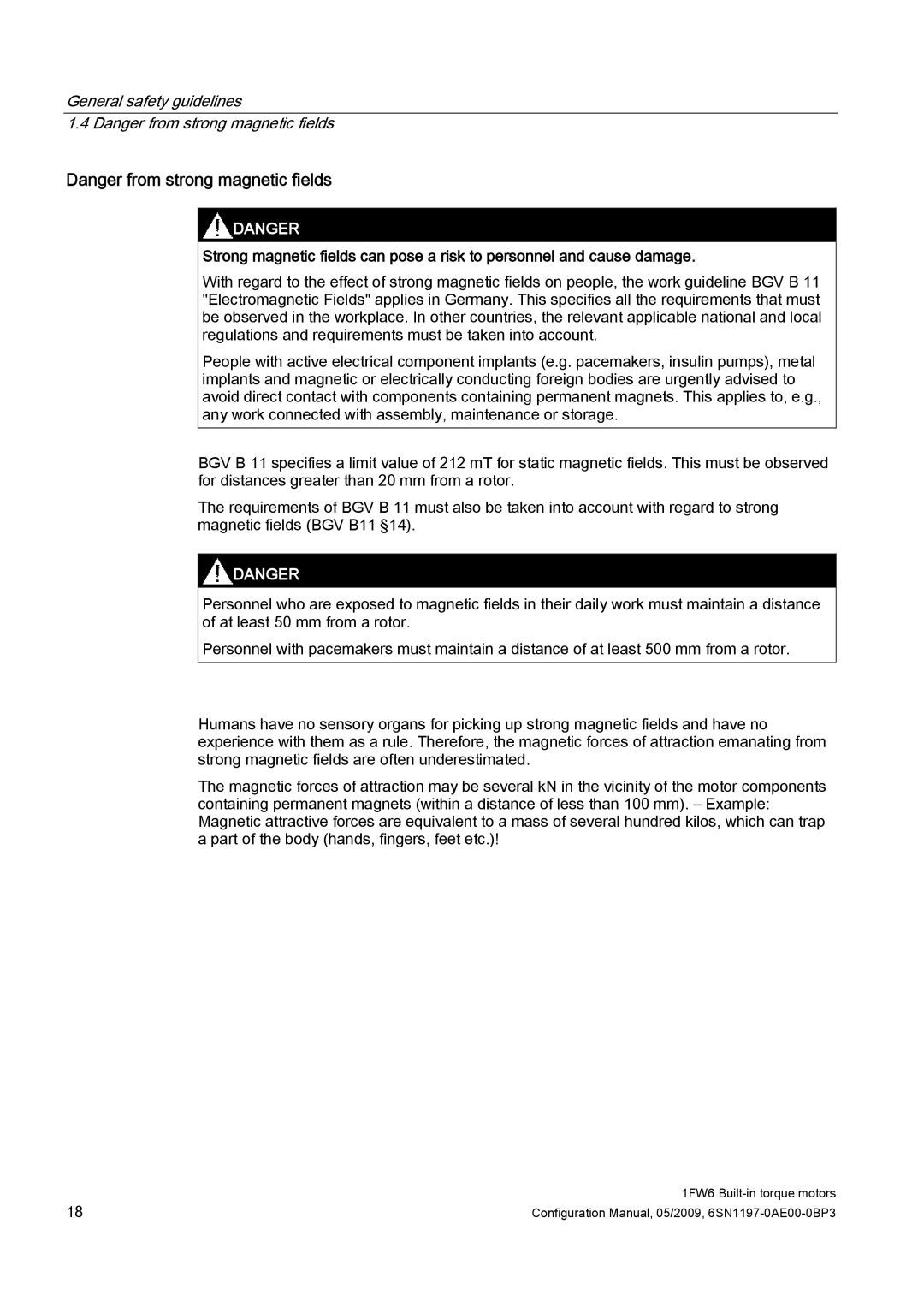
General safety guidelines
1.4 Danger from strong magnetic fields
Danger from strong magnetic fields
![]() DANGER
DANGER
Strong magnetic fields can pose a risk to personnel and cause damage.
With regard to the effect of strong magnetic fields on people, the work guideline BGV B 11 "Electromagnetic Fields" applies in Germany. This specifies all the requirements that must be observed in the workplace. In other countries, the relevant applicable national and local regulations and requirements must be taken into account.
People with active electrical component implants (e.g. pacemakers, insulin pumps), metal implants and magnetic or electrically conducting foreign bodies are urgently advised to avoid direct contact with components containing permanent magnets. This applies to, e.g., any work connected with assembly, maintenance or storage.
BGV B 11 specifies a limit value of 212 mT for static magnetic fields. This must be observed for distances greater than 20 mm from a rotor.
The requirements of BGV B 11 must also be taken into account with regard to strong magnetic fields (BGV B11 §14).
![]() DANGER
DANGER
Personnel who are exposed to magnetic fields in their daily work must maintain a distance of at least 50 mm from a rotor.
Personnel with pacemakers must maintain a distance of at least 500 mm from a rotor.
Humans have no sensory organs for picking up strong magnetic fields and have no experience with them as a rule. Therefore, the magnetic forces of attraction emanating from strong magnetic fields are often underestimated.
The magnetic forces of attraction may be several kN in the vicinity of the motor components containing permanent magnets (within a distance of less than 100 mm). – Example: Magnetic attractive forces are equivalent to a mass of several hundred kilos, which can trap a part of the body (hands, fingers, feet etc.)!
18 | 1FW6 |
Configuration Manual, 05/2009, |
